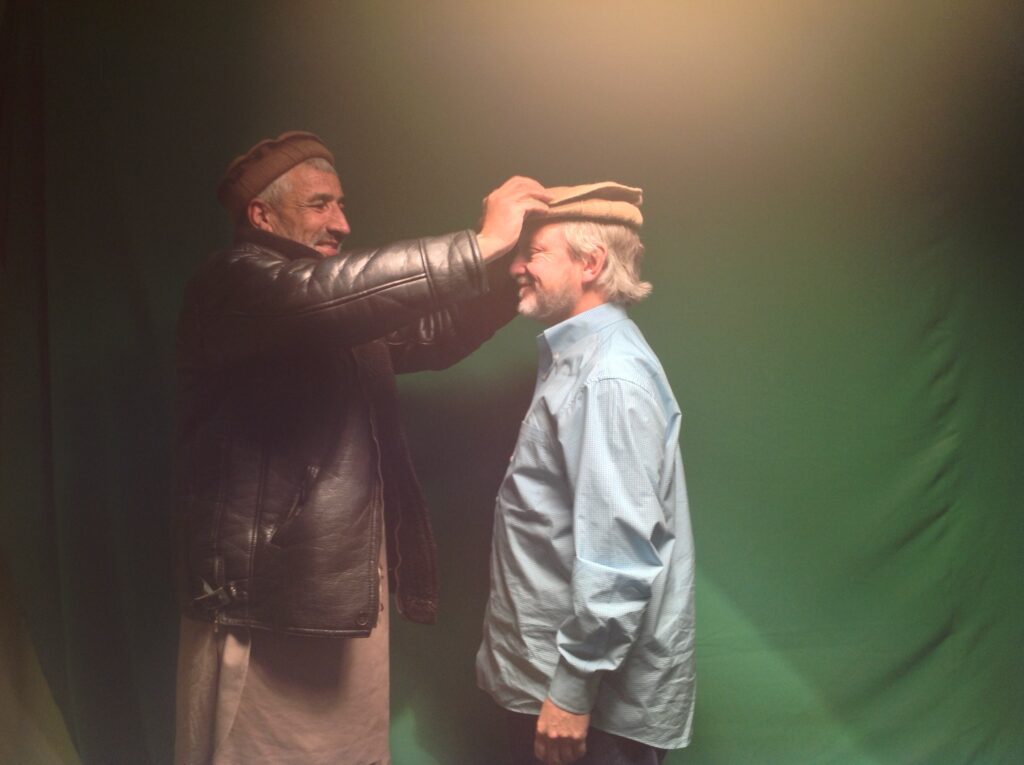One of the first public pieces by the new Quincy Institute was just published in the New Republic and it is worth a read. Adam Wunische is a research fellow with the Institute and a PhD candidate at Boston College. He served two deployments to Afghanistan while serving in the U.S. Army. “The Real Costs of the War in Afghanistan” documents an issue which was a key focus of my book “WAR: The Afterparty.”
A baseline annual cost for the United States to continue its war in Afghanistan is approximately ten to 15 U.S. service member fatalities each year. (With 17 fatalities thus far in 2019, this year has been the deadliest year for the U.S. since 2014.) Additionally, the war costs approximately $50 billion per year; the U.S. Department of Defense estimates $45 billion, while others place it at $52 billion.
In the context of other DoD operations and activities—as the ambassadors’ argument places them—these numbers appear low. More U.S. service members did, indeed, die in training accidents than in combat operations. The DoD budget for 2019 approaches $700 billion, and $50 billion might not seem like so much as a share of that. But this annual budget is separate from the Overseas Contingency Operations fund, which has been described as a war-making slush fund and has added $1.8 trillion to military spending since 2001. And clearly neither kitty tells us much about the war’s hidden costs.

I spent a month in Kabul in December 2014, the month the U.S. withdrew all but a few thousand of its troops. Among the numerous interviews in the Afghanistan chapter is this one with a 25-year Middle East/ Afghanistan contractor which explores the question, how long does the U.S. stay to fulfill its moral and military obligations to Afghanistan?
From “WAR: The Afterparty” Chapter Six: “Without Peace, There is Nothing.”
Staying with Farshid begat my meeting with Mr. E, a long-time American contractor who prefers to be anonymous, which begat my meeting with Will Everett.
Will, a former NPR (U.S. national public radio) reporter, arrives at the Kabul Serena Hotel lobby, where he identifies me, a westerner pecking away on a MacBook Air. The other people in the lobby are either behind the reception counter or carrying automatic weapons. Will works for Roots for Peace, an NGO that clears land mines and provides farming resources such as seedlings, fertilizer, tools, and training to increase crop yields. “Mines to Vines.”
I’ve been here once before, during an ill-advised late night walk that ended up in a cul-de-sac surrounded by snarling dogs and barbed wire fences. As the sun was setting with the call to prayer beckoning from the Wazir Abdul Khan mosque, I walked past the Lycée Esteqlal and ducked into the Serena. I stayed for dinner even though the hotel was a Taliban target earlier in the year. My elderly waiter casually mentioned that he served two of the fellows involved. They were young and well-mannered. After excusing themselves for the rest room, they returned spraying automatic gunfire through the restaurant. The waiter, unharmed, was back at work the next day.

Mr. E arrives and the three of us dine at the Asian fusion restaurant Wild Rice, sharing a savory spread of Nasi Goreng, Teriyaki Chicken and Sweet and Sour Fish. Will suggests a possible trip to Mazar-i-Sharif. I mention my interest in the Panjshir Valley. He promises to keep me posted on his plans. And he mentions his neighborhood swimming pool, which sounds splendid. I need a place to work out. Near the City Center mall, there is a huge banner promoting a gym on the second floor. When I climbed the stairs to check it out, there was only rubble, and a fellow with a gun telling me to get lost.
Mr. E’s bottom-line assessment after 12 years in country about whether the trillion dollars spent and blood spilt was worth the effort is discouraging.
It absolutely wasn’t worth the effort. I hate to agree with Donald Rumsfeld, but coming in with a small footprint and leaving as quickly as possible would have been preferable. It would have left the Afghans to their own devices and let them figure out how to take care of themselves. The same situation that they have to face eventually anyway.
In the meantime, a corrupt apparatus was developed which happens all the time after our entries into these countries and it just severely dislocated many, many things in the country. Rather than being liberators we became occupiers.
What was the U.S. mission originally?
Revenge. So close to 9-11. And then we didn’t want to leave Afghanistan to its own devices, because that was too dangerous, as it might slip back to the same condition it was in before. So then we got into nation building, digging the hole deeper and deeper and deeper, and one thing led to another. It’s now time to get out.
To elicit further Mr. E. insights, I related how I was in Mohammed’s carpet shop the other day and there was an older gentleman present, well-dressed, excellent English, a successful merchant from a nearby province. His son is a college student in Texas, working on Rand Paul’s presidential campaign. He said two things to me. One, our problem was we put black people in the White House. Two, he said, “You American people, if you start something, you have to finish it.”
Still tweaked from his first comment, I pointed out that the U.S. has been in Afghanistan 13 years, three times longer than World War Two. My question to him was how much longer should the U.S. stay? His response was, at least another 10 years.
I countered by asking, “Where is it written that United States taxpayers need to underwrite 25 years of Afghans trying to figure out their future, assuming we are providing security you want and development that is meaningful?” Mr. E responds,
I think the media construct was an assumption that we shouldn’t have departed the first time. And that led to these unfortunate consequences and eventually to 9/11 and now we are here to do things in a proper way. And that was just a sort of common denominator media understanding of Afghanistan.
We don’t think in terms of how long that might take. We get involved, get excited as the military parade passes by with all the boys in their finery and nice uniforms. In the same way as with the aid juggernaut coming into town. Change is happening, hospitals, girls educated and aren’t we exceptional because we are helping these people?
A lot of good has been done in Afghanistan, but it’s a hole without a bottom. You could have put in five trillion dollars and you would still have desperately poor people.
But is that really central to the U.S. as it’s falling apart? Probably not.
Also, we traumatized a good portion of our youth in uniform. We train them to be killers and they see horrible things and they go back and they are members of our society.
We have remote control warfare and we develop a national case of bad karma. We are not aware of what we are doing to other people and what we are doing to ourselves. We celebrate soldiers as heroes when they are more than likely just a kid from a small town in Arkansas who didn’t have a job.
It’s part of the uncalculated consequences whenever we make these interventions. It’s multi-dimensional, the blowback that we generate. It’s happened before and before and before and we still act surprised.
In Chalmers Johnson’s book on blowback, he says, blowback is not just what comes back to you, it is when your country is doing things you are not aware of, so that when it does come back to you, you’re mystified by it.[i]
That’s a good explanation. It’s awfully complex. The military mission was ill-conceived in the expansion of NATO outside of Kabul. It transformed us into occupiers, inevitably. So that the people resisting it became mujahedin, holy warriors. That didn’t happen until we expanded outside of Kabul. Many people warned about that, and it was still done. As a bit of insurgency ramped up outside, the idea was, we clamped down on difficulties in Kabul pretty well with NATO, why don’t we do it all over the country? And there was a lot of dissension saying this is going to have consequences. And then we had to justify that, or disguise the military presence, the nature of occupation, with economic assistance. So that ramped up the economic assistance.
[i]Johnson, C. (2004). Blowback: The Costs and Consequences of American Empire (American Empire Project). New York: Holt Paperbacks.
You can order the book on Amazon in paperback or ebook.
And do check out the Quincy Institute. A new, rather extraordinary partnership of progressive billionaire George Soros and right-wing billionaire Charles Koch, led by one of America’s foremost foreign policy thinkers Andrew Bacevich. From their website:
The foreign policy of the United States has become detached from any defensible conception of U.S. interests and from a decent respect for the rights and dignity of humankind. Political leaders have increasingly deployed the military in a costly, counterproductive, and indiscriminate manner, normalizing war and treating armed dominance as an end in itself…
The Quincy Institute is an action-oriented think tank that will lay the foundation for a new foreign policy centered on diplomatic engagement and military restraint. The current moment presents a once-in-a-generation opportunity to bring together like-minded progressives and conservatives and set U.S. foreign policy on a sensible and humane footing. Our country’s current circumstances demand it.

